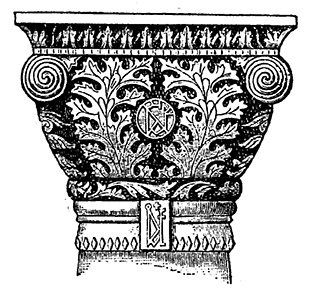












Acanthus ornaments appear extensively in the capitals of the Corinthian and Composite orders, and applied to the frieze. Ancient Greek culture was the first to use the ornament, elaborated by the Romans with the ends of the leaves curled. The design continued in popularity in the Byzantine, Romanesque and Gothic architecture, again during the Renaissance, and still favored in the present.
Acanthus ornaments are used for the interior of a building on the crown molding.
The design is also used in Medieval and Renaissance artwork, particularly in sculpture and wood carving and in friezes.
The relationship between acanthus ornament and the acanthus plant has been the subject of a long-standing controversy. Alois Riegl famously argued in his Stilfragen that acanthus ornament originated as a sculptural version of the palmette, and only later began to resemble acanthus spinosus.
Paris Ceramics specializes in architectural carved stone, marble, wood and metal.
By Appointment
PARIS CERAMICS
South Park Studios - Suite 10
88 Peterborough Road, London SW6 3HH
United Kingdom